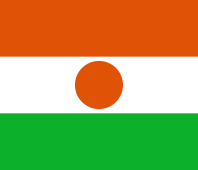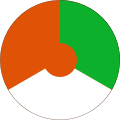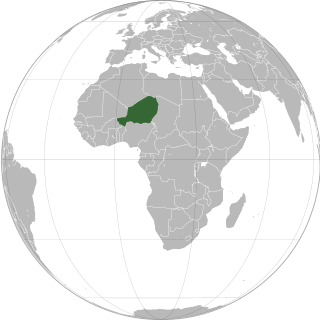
Niger or the Niger, officially the Republic of the Niger, is a landlocked country in West Africa. It is a unitary state bordered by Libya to the northeast, Chad to the east, Nigeria to the south, Benin and Burkina Faso to the southwest, Mali to the west, and Algeria to the northwest. It covers a land area of almost 1,270,000 km2 (490,000 sq mi), making it the largest landlocked country in West Africa and the second largest landlocked nation in Africa behind Chad. Over 80% of its land area lies in the Sahara. Its predominantly Muslim population of about 25 million lives mostly in clusters in the south and west of the country. The capital Niamey is located in Niger's southwest corner.
This is the history of Niger. See also the history of Africa and the history of West Africa.

The national flag of Burkina Faso is formed by two equal horizontal bands of red (top) and green, with a yellow five-pointed star resting in the center. The flag was adopted on 4 August 1984. The flag uses the Pan-African colours of Ethiopia, reflecting both a break with the country's colonial past and its unity with other African ex-colonies. The red is also said to symbolize the revolution and the green the abundance of agricultural and natural riches. The yellow star placed over the red and green stripes represents the guiding light of the revolution. The flag was adopted following the coup of 1983 which brought Thomas Sankara to power.

The national flag of Chad is a vertical tricolour consisting of a blue, a gold and a red field. Since the 1990s, its similarity to the flag of Romania has caused international discussion.

The national flag of Ivory Coast is a tricolour flag consisting of equal bands of orange, white, and green. The proportions of the flag are 2:3. It is the national emblem of the Republic of Ivory Coast as affirmed in Article 29 of the Constitution of Ivory Coast in 1960.

The flag of Mauritania is a green field containing a gold star and crescent, with two red stripes at the top and bottom of the field. The original national flag was introduced under the instructions of President Moktar Ould Daddah and the constitution of 22 March 1959 and was officially adopted on 1 April 1959.

The national flag of Benin is a flag consisting of two horizontal yellow and red bands on the fly side and a green vertical band at the hoist. Adopted in 1959 to replace the French Tricolour, it was the flag of the Republic of Dahomey until 1975, when the People's Republic of Benin was established. The new regime renamed the country and changed the flag to a green field with a red star in the canton. This version was utilized until multi-party democracy was re-established in 1990, coinciding with the Revolutions of 1989. The new government promptly restored the original pre-1975 flag.

The music of Niger has developed from the musical traditions of a mix of ethnic groups; Hausa, the Zarma-Songhai, Tuareg, Fula, Kanuri, Toubou, Diffa Arabs and Gurma and the Boudouma from Lac Chad.

The flag of Haiti is the national flag of the Republic of Haiti. It is a bicolour flag featuring two horizontal bands coloured blue and red, emblazoned by a white rectangular panel bearing the coat of arms of Haiti. The coat of arms depicts a trophy of weapons atop a green hill and a royal palm symbolizing independence. The palm is topped by the Cap of Liberty. The motto L'Union fait la Force appears on a white ribbon below the arrangement.
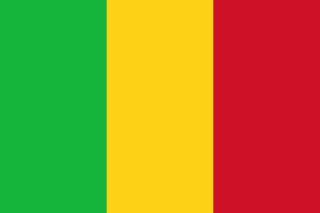
The national flag of Mali is a tricolour with three equal vertical stripes. From the hoist the colours are green, gold, and red, the pan-African colours. The flag of Mali is almost identical to the flag of Guinea, with the exception that the colours are in reverse order.

The flag of Togo is the national flag, ensign, and naval jack of Togo. It has five equal horizontal bands of green alternating with yellow. There is a white five-pointed star on a red square in the upper hoist-side corner. It uses the pan-African colors of Ethiopia, but the design resembles the flag of Liberia, which itself echoes the flag of the United States, making it part of both the pan-African and Stars and Stripes flag families.

Agadez, formerly spelled Agadès, is the fifth largest city in Niger, with a population of 110,497 based on the 2012 census. The capital of Agadez Region, it lies in the Sahara desert, and is also the capital of Aïr, one of the traditional Tuareg–Berber federations. The historic centre of the town has been designated a World Heritage Site by UNESCO.

The culture of Niger is marked by variation, evidence of the cultural crossroads which French colonialism formed into a unified state from the beginning of the 20th century. What is now Niger was created from four distinct cultural areas in the pre-colonial era: the Djerma dominated Niger River valley in the southwest; the northern periphery of Hausaland, made mostly of those states which had resisted the Sokoto Caliphate, and ranged along the long southern border with Nigeria; the Lake Chad basin and Kaouar in the far east, populated by Kanuri farmers and Toubou pastoralists who had once been part of the Kanem-Bornu Empire; and the Tuareg nomads of the Aïr Mountains and Saharan desert in the vast north. Each of these communities, along with smaller ethnic groups like the pastoral Wodaabe Fula, brought their own cultural traditions to the new state of Niger.

From 1990 to 1995, a rebellion by various Tuareg groups took place in Niger and Mali, with the aim of achieving autonomy or forming their own nation-state. The insurgency occurred in a period following the regional famine of the 1980s and subsequent refugee crisis, and a time of generalised political repression and crisis in both nations. The conflict is one in a series of Tuareg-based insurgencies in the colonial and post-colonial history of these nations. In Niger, it is also referred to as the Second or Third Tuareg Rebellion, a reference to the pre-independence rebellions of Ag Mohammed Wau Teguidda Kaocen of the Aïr Mountains in 1914 and the rising of Firhoun of Ikazkazan in 1911, who reappeared in Mali in 1916. In fact the nomadic Tuareg confederations have come into sporadic conflict with the sedentary communities of the region ever since they migrated from the Maghreb into the Sahel region between the 7th and 14th centuries CE. Some Tuareg wanted an independent Tuareg nation to be formed when French colonialism ended. This, combined with dissatisfaction over the new governments, led some Tuareg in Northern Mali to rebel in 1963.

The coat of arms of Niger shows a trophy of four national flags, in the colors orange, white, and green. In the middle, the state seal is arranged. On a green or gold shield the four golden symbols are shown. In the middle, there is a sun, to the left there is a vertical spear with two crossed Tuareg swords, to the right are three pearl millet heads and underneath is the frontal view of a zebu head. Under the coat of arms, there is a ribbon bearing the name of the country in French: Republique du Niger. While the constitution of Niger stipulates the color of the symbols upon the shield, there is no uniformity on the color of the shield. The 1999 Constitution reproduces the text of earlier constitutions, making a distinction between the Seal of State for which no shield colour is stipulated and the Coat of Arms of the Republic for which Sinople is stipulated as the shield colour. Sinople is analogous to Vert (Green) in heraldry, but official buildings and documents do not display green shields. Embassies and official documents use white, with gold emblems. The website of the President of Niger uses gold or yellow with dark gold or black emblems. The National Assembly of Niger meets below a large coat of arms with the shield coloured gold and the emblems in a darker gold.

The 2007-2009 Tuareg rebellion was an insurgency that began in February 2007 amongst elements of the Tuareg people living in the Sahara desert regions of northern Mali and Niger. It is one of a series of insurgencies by formerly nomadic Tuareg populations, which had last appeared in the mid-1990s, and date back at least to 1916. Populations dispersed to Algeria and Libya, as well as to the south of Niger and Mali in the 1990s returned only in the late 1990s. Former fighters were to be integrated into national militaries, but the process has been slow and caused increased resentment. Malian Tuaregs had conducted some raids in 2005–2006, which ended in a renewed peace agreement. Fighting in both nations was carried on largely in parallel, but not in concert. While fighting was mostly confined to guerrilla attacks and army counterattacks, large portions of the desert north of each nation were no-go zones for the military and civilians fled to regional capitals like Kidal, Mali and Agadez, Niger. Fighting was largely contained within Mali's Kidal Region and Niger's Agadez Region. Algeria helped negotiate an August 2008 Malian peace deal, which was broken by a rebel faction in December, crushed by the Malian military and wholescale defections of rebels to the government. Niger saw heavy fighting and disruption of uranium production in the mountainous north, before a Libyan backed peace deal, aided by a factional split among the rebels, brought a negotiated ceasefire and amnesty in May 2009.
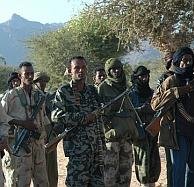
The Nigerien's Movement for Justice is a largely ethnic Tuareg militant group based in northern Niger. However the group also includes other nomadic ethnicities, within this area, such as the Toubou and the Fulani. These groups have been battling the Niger government since 2007.
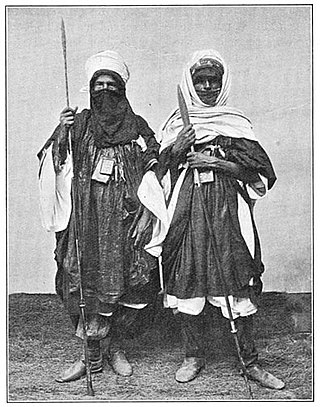
The Kaocen revolt was a Tuareg rebellion against French colonial rule of the area around the Aïr Mountains of northern Niger during 1916–17.
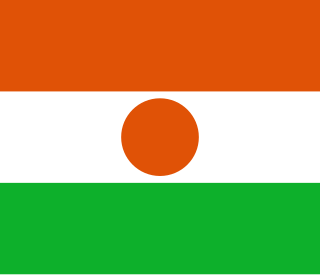
The following outline is provided as an overview of and topical guide to Niger:
Orphans of the Sahara is a three-part documentary series produced by Al Jazeera and aired in January 2014. The series follows the story of the Tuareg people of the Sahara desert, from their involvement in war in Libya, fighting for Muammar Gaddafi, to their return home to crushing poverty in Mali and Niger, then as they launched the Tuareg Rebellion of 2012 for an independent country in the Sahara, Azawad. As the Northern Mali conflict escalated, their dreams were crushed once again, first by al-Qaeda, then by French military intervention in Mali and Niger, with the help of military coalitions established by EU nations and US.
